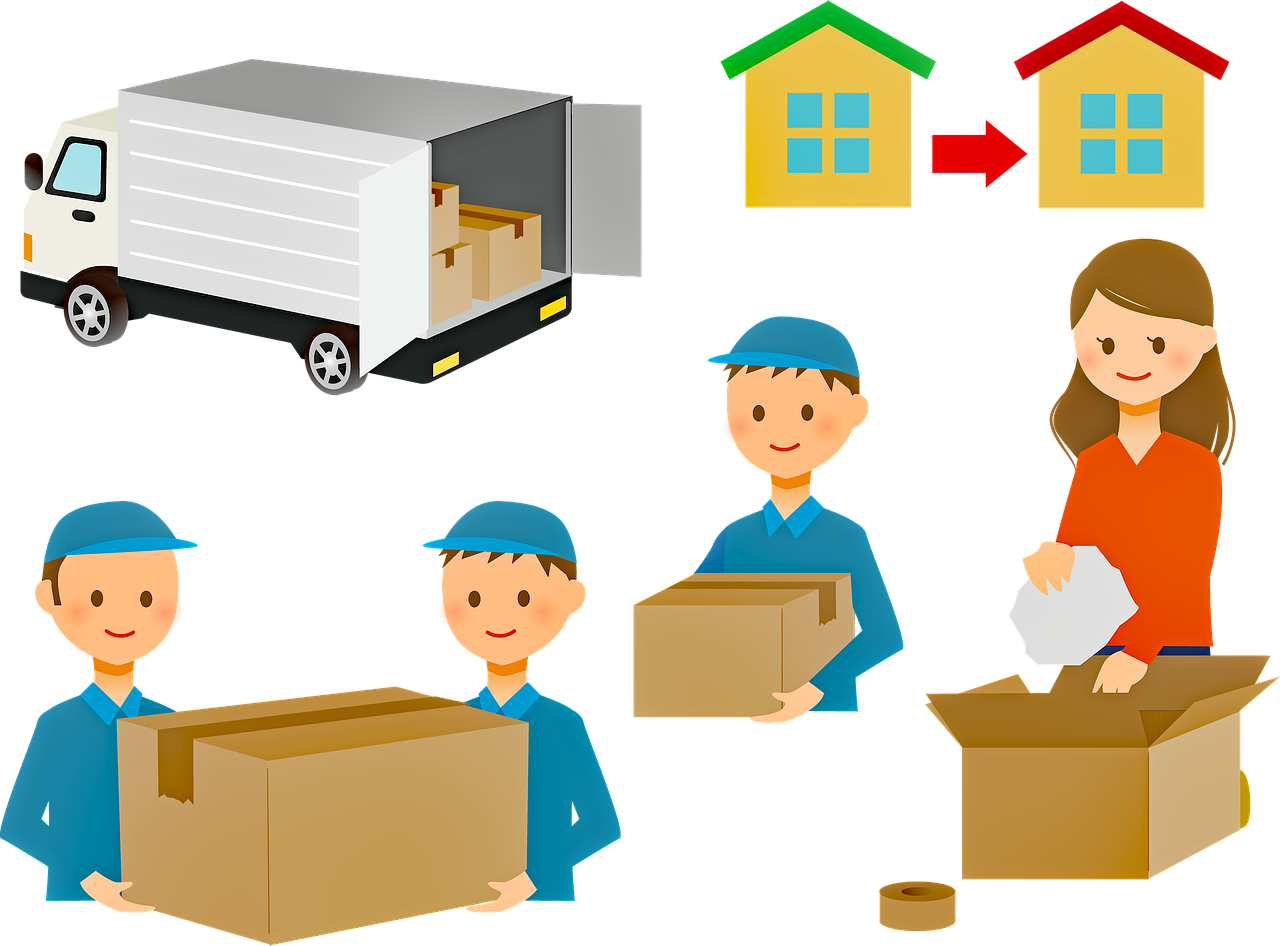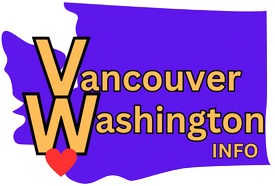
Moving to Vancouver Washington Costs
Table of Contents
ToggleMoving to Vancouver Washington Costs
Moving to a new city can be an exciting but expensive endeavor, and this relocation guide for moving to Vancouver Washington will help you navigate the financial aspects of the process. Hosted by Hannah Dubyne, this video provides valuable information on the various costs associated with moving to different areas. From movers and storage expenses to double mortgage or rent costs and budgeting for new furniture and items, Hannah covers it all. Additionally, she touches on travel expenses, eating out during the moving process, and closing costs for purchasing a new home in Vancouver Washington. Whether you’re planning a local move or relocating from across the country, this guide will give you a rough estimate of the expenses you may incur.
Understanding the Cost of Moving
Moving can be an exciting new chapter in your life, but it can also come with a hefty price tag. It’s important to have a clear understanding of the expenses involved in the moving process so that you can plan and budget accordingly. In this article, we will discuss the various factors that influence moving costs, the pros and cons of hiring professional movers versus doing it yourself, the costs of U-Haul rentals, the expense of storage rentals, navigating double mortgage or rent costs, budgeting for new furniture and items, travel expenses during relocation, food and living expenses when moving, understanding closing costs in Clark County, and finally, the importance of planning and budgeting for your move. Let’s dive in!
Assessing the Expense Range of Moving
The cost of moving can vary greatly depending on several factors. These factors include the distance of the move, the size of your household and the amount of belongings you have, the need for special packing materials, the cost of packing services, and any additional services you may require, such as storage or insurance. It’s essential to assess these factors to get a clear idea of the expense range of your move. By doing so, you can avoid any financial surprises and plan your budget accordingly.
Factors that Influence Moving Costs
As mentioned earlier, several factors can influence the cost of your move. The distance of your move is one of the most significant factors. Long-distance moves typically cost more than local moves due to increased transportation costs. The size of your household and the amount of belongings you have can also impact the cost. More items require more packing materials and possibly more labor. Special packing materials, such as crates or protective padding for fragile items, can also add to the expense. Additionally, if you require additional services like storage or insurance, these will incur additional costs. It’s crucial to consider all of these factors when estimating the cost of your move.
Estimation vs. Actual Moving Costs
When budgeting for a move, it’s essential to understand that your estimation may differ from the actual moving costs. Estimations are based on various factors such as distance, size, and services required, but unforeseen circumstances can impact the final cost. Factors like weather conditions, traffic, or unexpected packing challenges can all contribute to the final price. While it’s challenging to predict these circumstances accurately, having a contingency budget can help you prepare for any additional costs that may arise.
Costs of Hiring Professional Movers vs DIY Move
Deciding whether to hire professional movers or embark on a DIY move is a significant consideration when it comes to managing your moving costs. Let’s take a closer look at the pros and cons of each option.
Hiring Professional Movers: Pros and Cons
Hiring professional movers can offer several benefits. Firstly, they have the experience and expertise to handle your belongings safely and efficiently. They can provide packing services, ensuring that your items are adequately protected for the move. Additionally, professional movers often have insurance, which provides peace of mind in case any damage occurs during the move. They also have the necessary equipment and vehicles to transport your belongings, saving you from the hassle of arranging these yourself. The main drawback of hiring movers is the cost, which can be higher than a DIY move.
DIY Move: Pros and Cons
Opting for a DIY move can help you save money, especially if you have friends or family willing to lend a hand. It also offers greater flexibility as you have complete control over the packing and transportation process. DIY moves allow you to set your own timeline and make decisions according to your preferences. However, a DIY move requires a significant amount of time, effort, and physical labor. You’ll need to rent a moving truck or van, pack and load all your belongings, drive to your new location, and unload and unpack everything yourself. It’s essential to assess your capabilities and availability before deciding on a DIY move.
Cost Comparison Between Hiring Movers and a DIY Move
When comparing the costs of hiring professional movers versus a DIY move, it’s important to consider all the factors involved. While professional movers may have a higher upfront cost, they often offer a more convenient and efficient moving experience. DIY moves may seem cheaper initially, but costs can quickly add up when renting moving vehicles, purchasing packing materials, and potentially taking time off work. It’s crucial to weigh the pros and cons of each option and consider your specific circumstances and priorities before making a decision.
Costs of U-Haul Rentals
U-Haul is a popular choice for those who prefer a DIY move. Understanding the pricing structure of U-Haul rentals and considering the pros and cons of this option can help you make an informed decision.
Understanding the Pricing Structure of U-Haul Rentals
U-Haul rentals are typically priced based on the size of the truck or van you need and the duration of the rental. Prices vary depending on the location and the time of year. Smaller vehicles like cargo vans or pickup trucks are generally less expensive than larger moving trucks. Additionally, renting for a longer duration may result in lower daily rates. U-Haul also offers optional services and equipment, such as dollies, furniture pads, and storage units, which can be added to your rental for an additional cost. Familiarizing yourself with U-Haul’s pricing structure can help you plan your budget accordingly.
Pros and Cons of Choosing a U-Haul Rental
There are several advantages to choosing a U-Haul rental for your move. Firstly, U-Haul vehicles are readily available in many locations, making it convenient to rent and return them. They offer a range of vehicle sizes, allowing you to choose the most suitable option for your needs. U-Haul rentals also provide flexibility, as you can set your own schedule and decide how long you need the vehicle. However, U-Haul rentals require you to handle all the aspects of the move yourself, including the packing, loading, and driving. This can be physically demanding and time-consuming, especially if you’re moving a large household.
Saving Tips for U-Haul Rentals
To save money on U-Haul rentals, consider these tips. First, book in advance to secure the vehicle size you need and potentially take advantage of early booking discounts. Secondly, be aware of U-Haul’s peak seasons, as prices may be higher during these times. If your move allows for flexibility, consider renting during off-peak periods to save on costs. Lastly, return the vehicle on time to avoid any additional charges. By being mindful of these tips, you can make the most of your U-Haul rental and keep your moving costs in check.
The Expense of Storage Rentals
Storage rentals can be an additional cost to consider during the moving process. The need for storage will depend on your specific circumstances and the time between moving out of your current home and into your new one. Let’s explore how to determine whether storage rentals are necessary, the cost range for storage rentals, and tips to save on storage costs.
Determining the Need for Storage Rentals
Storage rentals can be beneficial if you have a gap between moving out of your current home and moving into your new one. Whether it’s due to logistical reasons, such as closing dates not aligning, or if you’re downsizing and need extra time to sort through your belongings, storage rentals provide a temporary solution. Consider your moving timeline and the availability of storage options in your area to determine if you need to factor this expense into your budget.
Cost Range for Storage Rentals
The cost of storage rentals can vary depending on several factors, including the size of the storage unit, the location, and the duration of rental. Smaller units like lockers or small closets are generally less expensive, while larger units or climate-controlled units may have higher monthly fees. The location of the storage facility can also impact the cost, with units in urban areas typically costing more than those in suburban or rural areas. It’s important to research the options in your area and compare prices to find the best fit for your needs and budget.
Tips to Save on Storage Costs
If you’re looking to save on storage costs, consider these tips. Firstly, declutter and downsize before moving. The fewer items you need to store, the smaller and less expensive the storage unit you’ll require. Secondly, shop around and compare prices from different storage facilities. Look for any discounts or promotional offers that may be available. Additionally, renting a storage unit farther from urban areas or in less popular locations can often result in lower monthly fees. Lastly, consider sharing a storage unit with a friend or family member if it makes logistical and financial sense. By implementing these tips, you can optimize your storage costs and potentially save a significant amount.
Navigating Double Mortgage or Rent Costs
Double mortgage or rent costs can be a significant financial concern during the moving process. Let’s explore why these costs may occur, the cost range of double mortgage or rent, and tips to avoid or minimize this potential financial burden.
Why Double Mortgage or Rent Costs May Occur During Moving
Double mortgage or rent costs can arise when you need to move out of your current home before your new home is available. This situation often occurs when closing dates don’t align or when there are delays in the construction or renovation of your new home. When you have to maintain your current residence while also paying for the new one, it can lead to financial strain.
Cost Range of Double Mortgage or Rent
The cost range of double mortgage or rent will vary depending on several factors, including the duration of the overlap, the cost of your current mortgage or rent, and any additional expenses associated with maintaining two properties. Longer periods of overlap and higher mortgage or rent costs will naturally result in higher expenses. It’s crucial to carefully assess your financial situation and plan accordingly to avoid any unnecessary financial strain.
Tips to Avoid or Minimize Double Mortgage or Rent Costs
To avoid or minimize double mortgage or rent costs, consider these tips. Firstly, try to negotiate a leaseback agreement or an extended closing date with the buyer of your current home. This can provide you with additional time to move out without incurring double expenses. Secondly, communicate with your seller or builder to ensure there is a clear understanding of the expected completion date for your new home. This can help you plan your move more effectively and minimize the overlap. Lastly, consider temporary housing options such as staying with friends or family or renting a short-term furnished apartment. While these options may incur costs, they can be more affordable compared to paying for two mortgages or rents simultaneously.
Budgeting for New Furniture and Items
Moving to a new home often involves assessing the need for new furniture and household items. Let’s explore how to assess this need, estimate the budget for new furniture and items, and share tips for saving on these expenses.
Assessing the Need for New Furniture and Household Items
Before moving, take inventory of your current furniture and household items to determine what can be used in your new home. Consider the size, layout, and style of your new space to see if any furniture may not fit or align with your vision for the new home. Additionally, assess the condition of your current furniture and items to ensure they can withstand the move and continue to function properly. By assessing your current belongings, you can make an informed decision about what needs to be replaced or added to your new home.
Estimating the Budget for New Furniture and Items
Once you have assessed your need for new furniture and household items, it’s time to estimate the budget. Start by researching the average prices of the items you need. Consider the quality, materials, and brands to determine a realistic budget range. Additionally, factor in any delivery or assembly costs that may be involved. It’s important to be realistic about your budget and prioritize the essential items first. Remember, you can always add more items over time as your budget allows.
Tips for Saving on Furniture and Household Items
To save on furniture and household items, consider these tips. Firstly, shop during sales or clearance events. You can often find significant discounts on furniture and other household items during these times. Secondly, consider buying secondhand or refurbished items. Online marketplaces, thrift stores, or yard sales can be great sources for affordable furniture and household items. Lastly, consider DIY options, such as repurposing or refinishing existing furniture, which can add a personal touch while saving money. By incorporating these tips, you can furnish your new home without breaking the bank.
Travel Expenses During Relocation
Relocating to a new area often involves travel expenses. Understanding potential travel costs, estimating their range, and learning how to save on these expenses can help you manage your budget effectively.
Identifying Potential Travel Expenses
Travel expenses can include transportation costs, accommodation, meals, and any additional expenses related to the journey. Depending on the distance of your move, you may need to factor in flights, gas for your vehicle, or rental car fees. If the move involves an overnight stay, accommodation costs and meals should be considered as well. It’s important to identify and plan for these potential expenses to avoid any financial surprises.
Estimating the Cost Range for Travel Expenses
The cost range for travel expenses will vary depending on several factors, including the distance of your move, the mode of transportation, the number of travelers, and the duration of the journey. If traveling by car, calculate the estimated fuel costs, tolls, and potential overnight stays. When flying, consider the prices of flights, luggage fees, and transportation to and from the airport. Researching and estimating these costs can help you plan your budget accordingly.
Tips to Save on Travel Costs During the Move
To save on travel costs during the move, consider these tips. Firstly, plan your travel well in advance. By booking flights or making reservations early, you may be able to secure lower prices. Secondly, compare transportation options to find the most cost-effective route. Sometimes driving can be cheaper than flying, especially for shorter distances or when traveling with a large group. Additionally, pack light and avoid excess luggage fees by only bringing essentials. Lastly, consider staying with friends or family along the way, if it aligns with your travel plans. This can save on accommodation costs and provide an opportunity to catch up with loved ones. By implementing these tips, you can save money while traveling to your new location.
Food and Living Expenses When Moving
Moving can often lead to increased food and living expenses. It’s essential to understand why these expenses can rise, estimate their range, and learn tips on managing them during the move.
Why Food and Living Expenses Can Increase During Moving
Food and living expenses can increase during the moving process due to several reasons. Firstly, eating out or ordering takeout may become more common as you pack up your kitchen and prepare for the move. This can result in higher food expenses than your usual grocery budget. Secondly, if your move requires an overnight stay or a temporary living arrangement, accommodation costs can add up. Renting a temporary apartment or staying in a hotel for an extended period can significantly impact your living expenses. It’s important to recognize and plan for these potential increases.
Ranges of Food and Living Expenses
The ranges of food and living expenses will vary depending on several factors such as the duration of the move, the number of people involved, the cost of dining options in your area, and the type of temporary accommodation you choose. Researching the average costs of dining out or ordering takeout in your new area can help you estimate these expenses. Additionally, contacting hotels or rental agencies for pricing information can provide insight into the potential living expenses during the transition period.
Tips to Manage Food and Living Expenses During the Move
To manage food and living expenses during the move, consider these tips. Firstly, plan your meals in advance and minimize eating out by preparing easy and affordable meals that require minimal cooking equipment. This can help keep your food expenses in check. Secondly, if you need temporary accommodation, consider more budget-friendly options such as extended stay hotels or short-term rentals. These options often have kitchenettes or full kitchens, allowing you to cook your own meals and save on dining costs. Lastly, if you have friends or family in the area, consider staying with them temporarily to reduce accommodation costs. Remember to express your gratitude and contribute to any associated expenses. By implementing these tips, you can manage your food and living expenses effectively during the move.
Understanding Closing Costs in Clark County
Closing costs are an essential aspect of moving, particularly for homeowners. Understanding what closing costs are, the potential costs specific to Clark County, and the factors that influence the amount of closing costs can help you plan your budget more accurately.
What Are Closing Costs?
Closing costs are the various fees and expenses associated with the purchase or sale of a property. These costs are typically incurred during the closing or settlement process and include expenses such as appraisal fees, title insurance, attorney fees, and taxes. Closing costs can vary depending on the location and the specific details of the transaction. It’s crucial to consider these costs when budgeting for your move to avoid any financial surprises.
Potential Closing Costs in Clark County
In Clark County, closing costs can include various fees and expenses. These may include lender fees, such as origination fees or loan processing fees, as well as title insurance fees, appraisal fees, and attorney fees. Additionally, there may be recording fees, transfer taxes, and prepaid expenses such as property taxes or homeowners insurance. It’s important to consult with a real estate professional or a closing attorney in Clark County to get a more accurate estimate of the potential closing costs based on the specifics of your transaction.
Factors That Influence the Amount of Closing Costs
Several factors can influence the amount of closing costs. The purchase price of the property is often a significant determinant, as closing costs are often calculated as a percentage of the purchase price. Additionally, the terms of your loan and the specific services required for the transaction can impact the closing costs. Other factors may include local regulations or requirements, as well as the negotiation of certain fees with the seller. Understanding these factors and consulting with professionals in Clark County can provide you with a clearer picture of the potential closing costs you may encounter.
Conclusion: Planning and Budgeting for Your Move
Moving can be an exciting but financially challenging endeavor. By understanding the various costs involved and taking steps to plan and budget for your move, you can navigate the process more smoothly. Assessing the expense range of moving, comparing the costs of hiring professional movers versus a DIY move, understanding the pricing structure of U-Haul rentals, factoring in the expense of storage rentals, managing double mortgage or rent costs, budgeting for new furniture and household items, estimating travel expenses, controlling food and living expenses, understanding closing costs in Clark County, and prioritizing planning and budgeting can all contribute to a more cost-effective and stress-free move. Remember to research, ask for advice from professionals, and seek out money-saving opportunities along the way. Good luck with your move to Vancouver Washington, and may it be a smooth and rewarding experience for you and your family!
You May Also Like

How Vancouver Washington Got It’s Name
25 September 2023
Vancouver Waterfront Tour
13 August 2023


